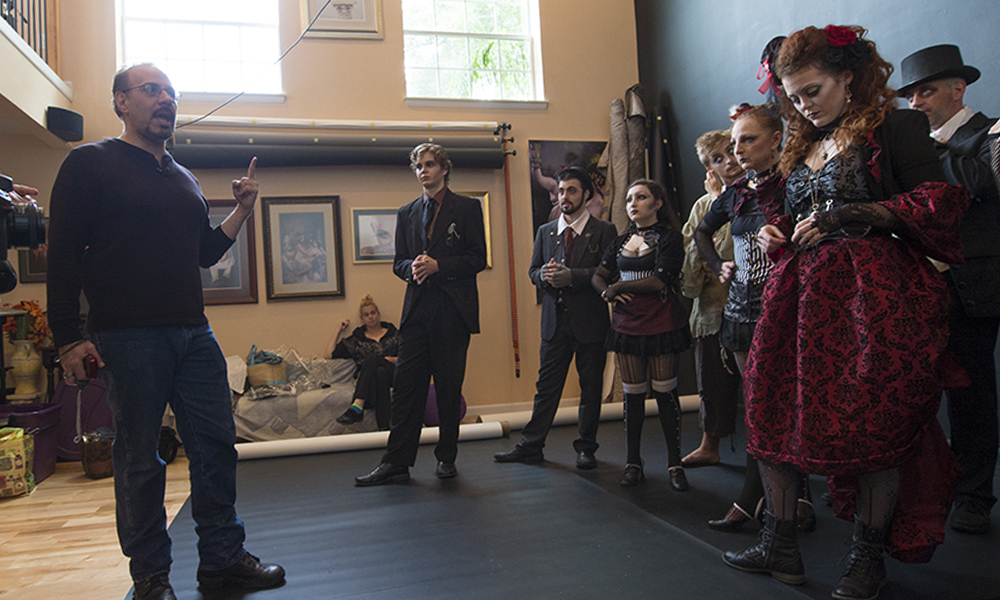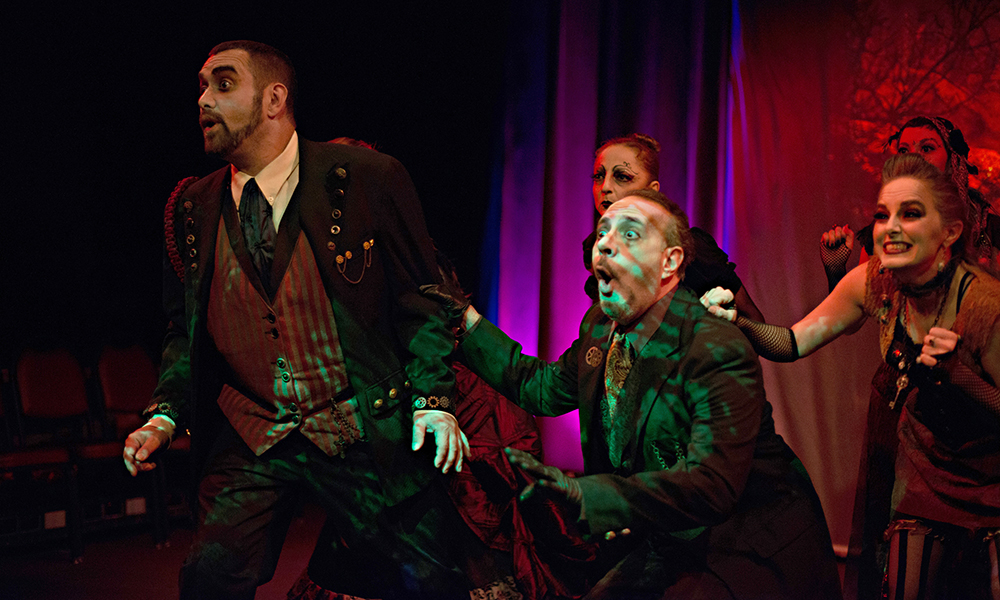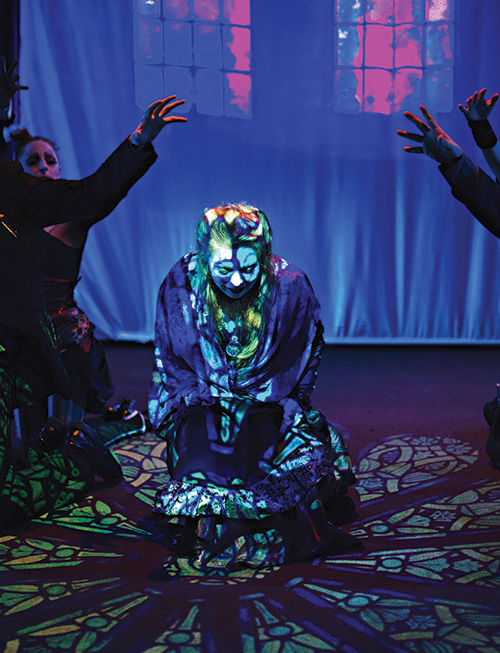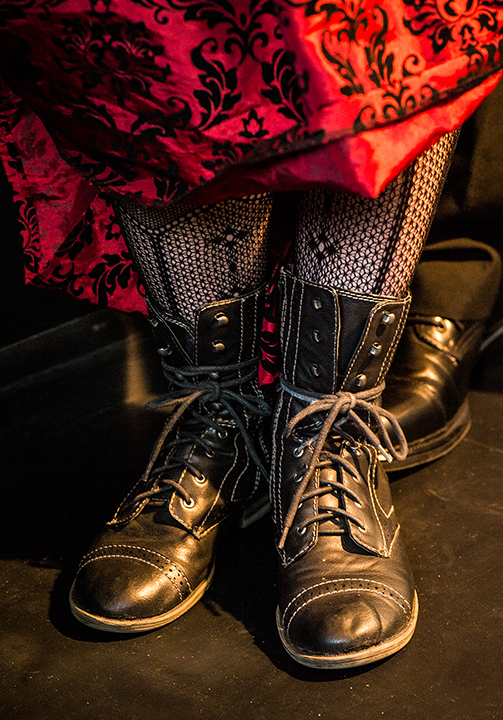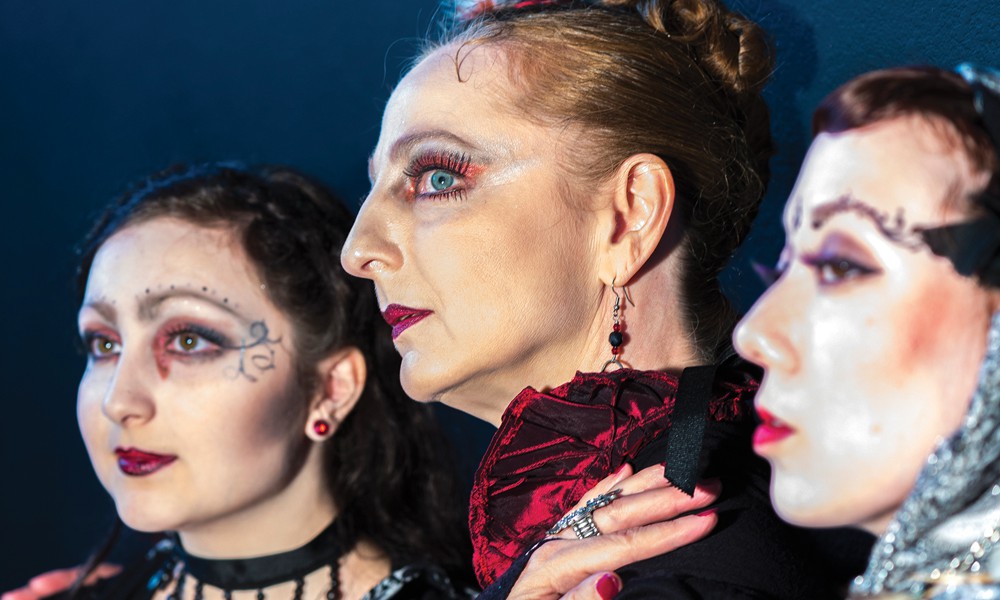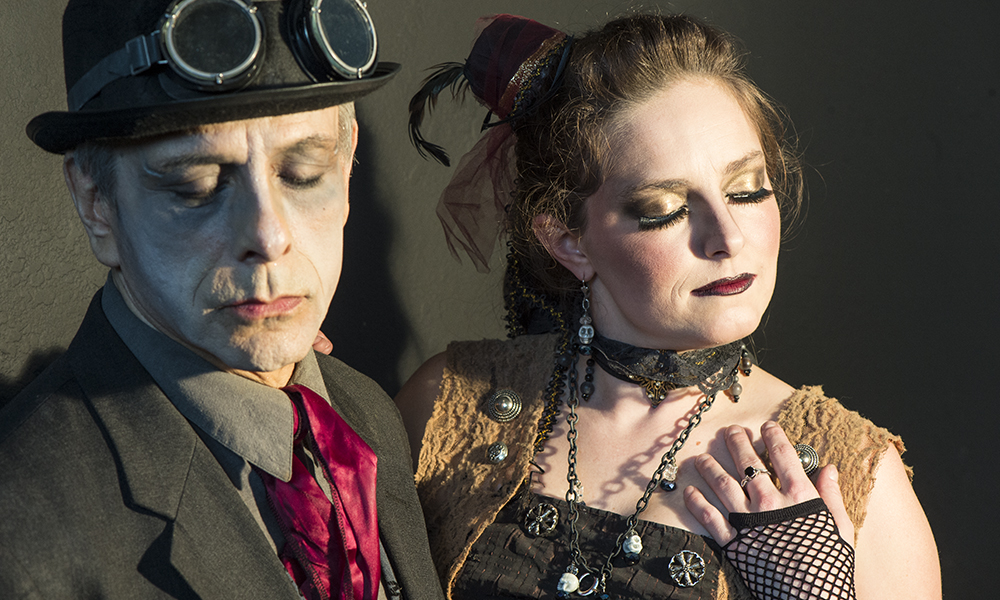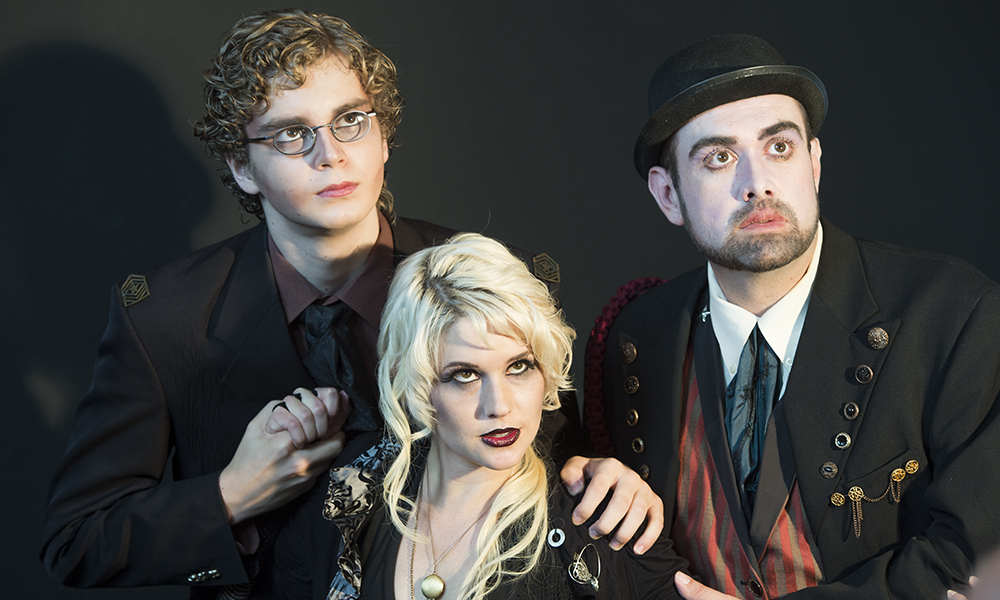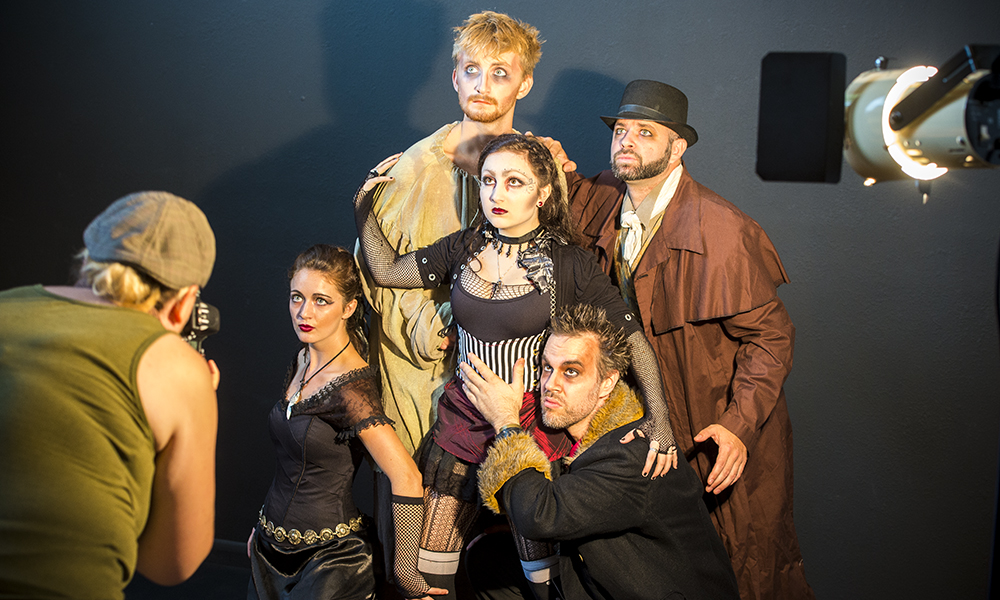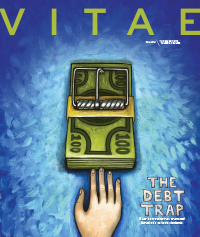It’s the Sunday afternoon before Labor Day, but Valencia theater professor John DiDonna and a cast of more than 20 are hard at work in a small rehearsal studio in Orlando. It’s their first “stumble-through” for “Phantasmagoria,” a show that has become a Central Florida Halloween tradition. The players are still “on script,” the blocking has been worked out but not polished—thus, “stumble-through.” “July, 1860, the year without a summer,” a half-dozen players chant. DiDonna, writer and director, a whirlwind of energy, is also in the cast. Stepping into the action, he turns up the volume and intensity until everybody has his or her game face on. “HOPE would never have fled, HOPE has been destroyed…” DiDonna tosses out stage directions for this, “an ancient Hindu tale of a woman WRONGED.” That is one of the sequences of the “steam punk” collection of Victorian era stories and legends adapted to fit into the fifth incarnation of this show that-goes-bump-in-the-night. “Here we go, get in your circle,” DiDonna says. “Let’s take that again so we can get these crosses, these transitions.” On stage, the actors break into twos and threes, stride purposefully across in front of one another reading part of a story, then slip into a chorus to see that this installment of “Phantasmagoria” is “chilled into a selfish prayer.” But without their fishnet stockings and bustiers, rags and period-appropriate trench coats, without the video projections and fire and aerial stunts, the puppets and props, “Phantasmagoria” would not be “the graphic novel come to life” that DiDonna envisions each year as he researches vampire tales, stories of the undead, variations on Pandora’s Box (Pandora is one of the immortal characters of the show) or Lord Byron’s Gothic obsessions (another character, played by DiDonna), stories he spins into a “regular Gothic soap opera.” “Art and Horror of ‘Phantasmagoria’: Puppetry, Photography, Costumes, Props and Video” was on exhibit for the first time at the Anita S. Wooten Gallery on East Campus in October, with puppets and props from “Jabberwock” and “Banshee” themed versions of the show and the cast in all their 19th-century splendor. All of this reminds us that this is an acting piece, sure, but a spectacle as well, chilling performances made more so by mood, music and props. A fixture of the local theater scene long before he joined Valencia’s faculty, his show began life as a sort of revue, “an evening of horror stories” told by actors. “It has evolved into an ongoing soap opera, with characters who carry through it, chapter by chapter,” DiDonna says. A little Shakespeare, a little Edgar Allan Poe (“The Pit and the Pendulum”), with Byron and Pandora and Alice Liddell (who inspired “Alice in Wonderland”), and they were off, with the shows growing in cast and complexity every year. Fire stunts and stage combat, flying puppets and flying people, projectors projecting still images and video—it’s a scene straight out of Poe or Arthur Conan Doyle, to name two of the famous authors they draw from, with a hint of “Rocky Horror Picture Show” and “The Vampire’s Assistant” Gothic. The Orlando Weekly has raved that “There’s no better trick or treat in town,” and the Orlando Sentinel said that “Scary never seemed so stylish.” “The biggest aesthetic influence is the Victorian era, which is where steam punk comes from—that look,” DiDonna says of Phantasmagoria’s “late 1880s circus look. No matter where the story goes, forward or backward in time, we keep that feel.” There’s a little dance, movement and chant to the show, and that adds to the challenge. The 23 players learn a little “dirty swash” (a rougher form of swashbuckling stage combat) and how to play—creatively and within safety limits—with fire. One- third of this year’s cast is Valencia students or alumni, making this production a teachable moment for DiDonna. Real theater people don’t wait to be cast in a show. They create stage work for themselves. “It teaches them ensemble, how to collaborate as actors, writers, helping with each other’s staging,” he says. “They’re learning to take control of the work they want to do, take control of their part of a show, how to invent themselves. It’s real think-outside-the-box theater.” 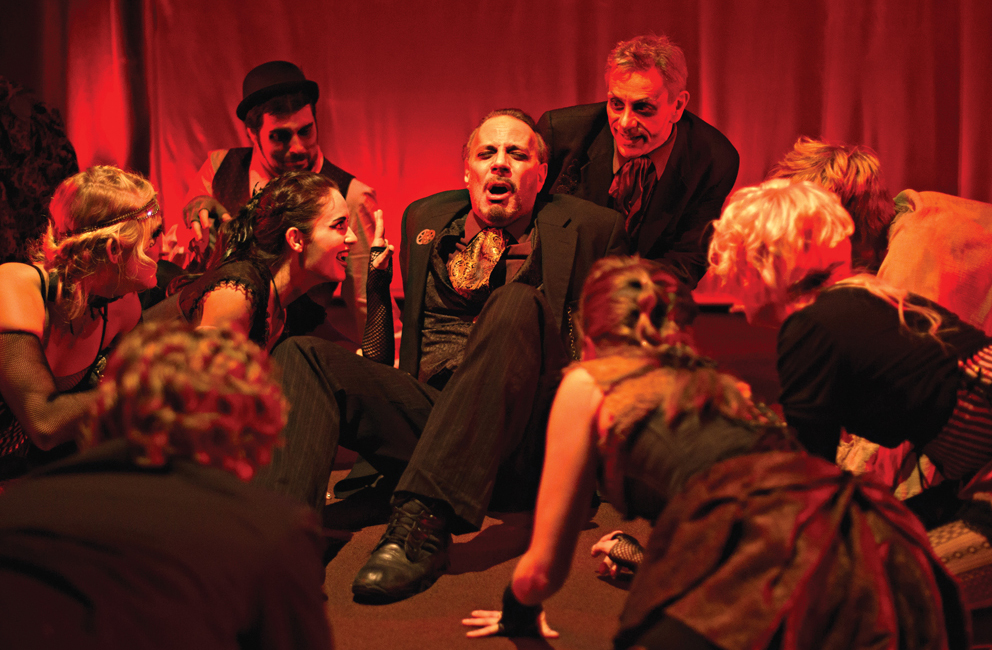
John DiDonna (center) with the Phantasmagoria troupe Photograph by Kristen Wheeler
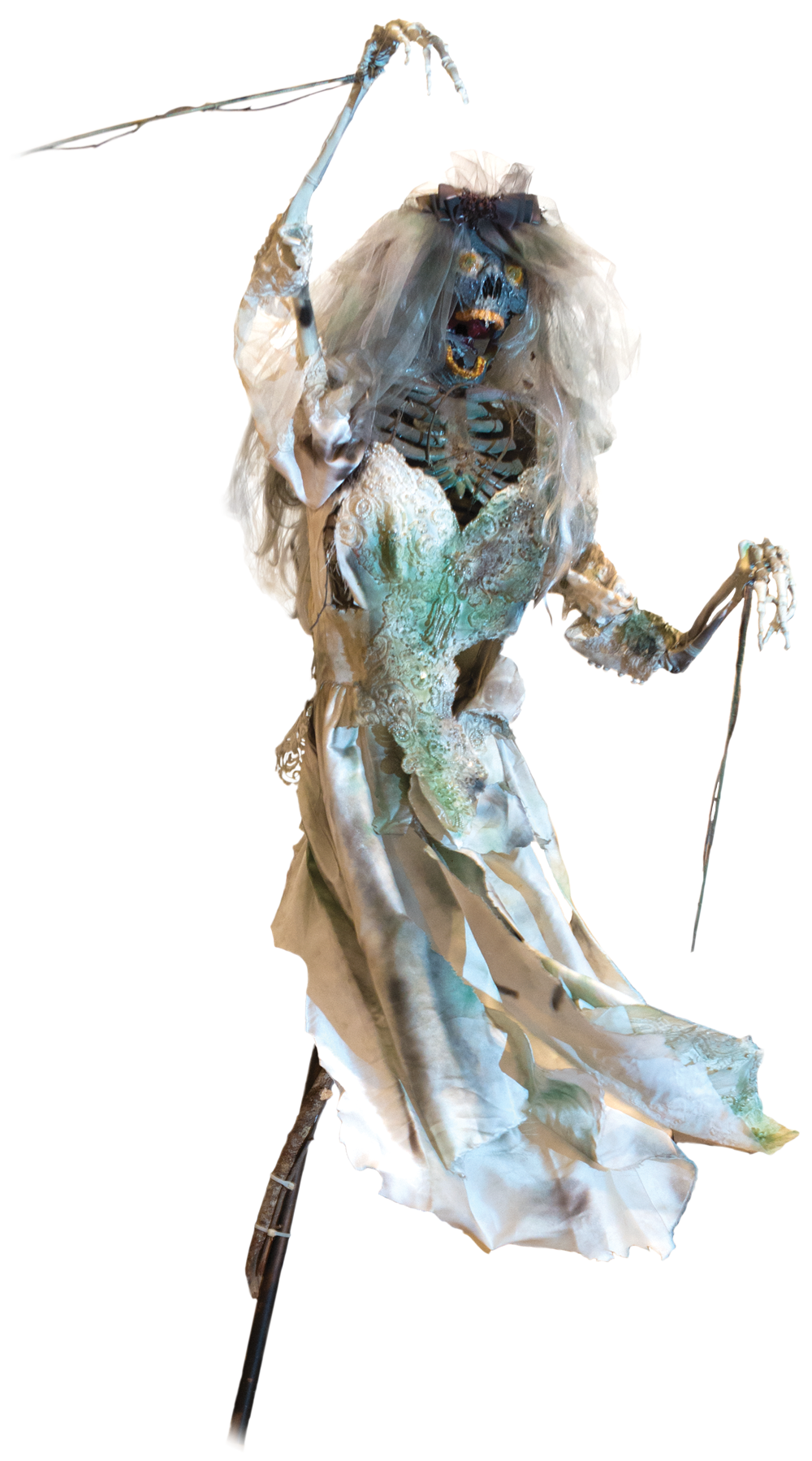
“Phantasmagoria” gurgled to life as DiDonna’s idea of a Halloween treat.

